On January 24, 1793, Bostonians raised a liberty pole at the intersection of Kilby, Water and Battersea streets near Faneuil Hall.
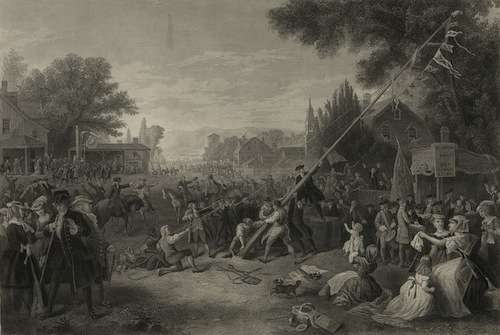
“Raising the liberty pole,” 1776, painted by F.A. Chapman; engraved by John C. McRae, N.Y. Photo courtesy Library of Congress.
But the American Revolution had ended. Why a liberty pole in 1793? And didn’t Boston already have a Liberty Tree?
The liberty pole celebrated the news that the French were about to topple the monarchy and win their own liberte, egalite and fraternite. Boston held a Civic Feast in honor of the event.
The Bostonians named that spot Liberty Square during the celebration, according to Samuel Adams Drake. Back in 1765, the government put up a building on the site, which people believed was intended as a stamp office. They tore down the building.
Liberty Pole Party
And how they celebrated! Bostonians paraded through town to the homes of Gov. John Hancock and Lt. Gov. Sam Adams, then called “citizens.” They raised a toast at each house. The celebrants also roasted an ox and brought it to the square, its horns mounted atop the 60-foot liberty pole hoisted to honor the French.
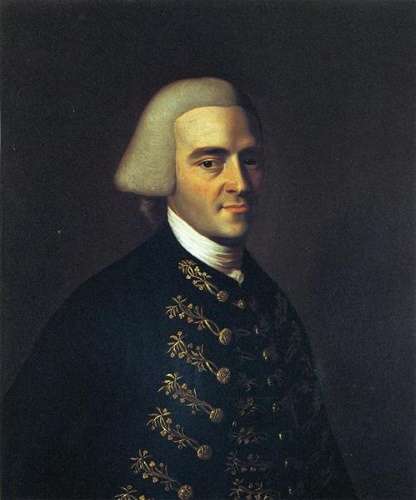
John Singleton Copley painted this portrait of John Hancock around 1771. Courtesy Massachusetts Historical Society.
Then they laid tables from the Old State House nearly to Kilby Street. A wagon brought 800 loaves of bread. Then came another loaded with hogsheads of strong punch. They finished off the ox and then gathered at Faneuil Hall for “an entertainment,” Lt. Gov. Samuel Adams presiding.
An estimated half the adult population of Boston got drunk that night.
However, Louis XVI and Marie Antoinette had lost their heads to the guillotine three days earlier, something not known in Boston at the time.
“[B]ut as the bloody character of the French Revolution became manifest in the execution of Louis XVI, which had occurred three days before, the Civic Feast was not repeated,” wrote Drake.
Patriotic Bostonians ran hot and cold about the French. They were not only Papists but sworn enemies during the French and Indian wars, which lasted from 1688 to 1763. Then, of course, the French bailed out the rebellious colonists during the American Revolution and much was forgiven. But then in 1798, just a few years after the fall of the French monarchy, the Quasi-War between France and the U.S. broke out.
About Liberty Poles…
Romans erected the first liberty pole after the assassination of Julius Caesar. The murder plot’s leaders met a crowd of Romans at the Roman Forum, where someone placed a Phrygian cap from a freed slave on top of a pole to show the Romans were free from Caesar’s tyranny. (A Phrygian cap is a soft, pointed cap with the tip bent forward.)
Centuries later, dozens of colonial American towns erected liberty poles as a symbol of dissent against England. When they capped the pole with an ensign, usually a red cap or a flag, it meant the townspeople should assemble and vent their anger with the British government.
The poles often started trouble between patriots and loyalists. In Sandwich, Mass., for example, loyalists took down the liberty pole when leading patriots left town. The patriots then arrested them upon their return.
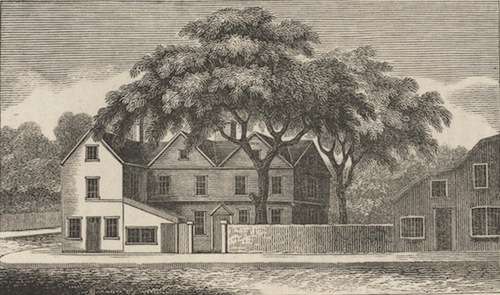
Illustration of The Liberty Tree in Boston, 1825. From A History of Boston, the metropolis of Massachusetts, from its origin to the present period, by Caleb H. Snow.
Liberty Trees
Patriots erected liberty trees instead in other towns, including Boston, Providence and Acton, Mass. A tall elm at the corner of Essex and Washington streets in Boston, for example, started as a rallying point against the Stamp Act for the Sons of Liberty.
Boston did have a liberty pole, though, during the Revolution. Patriots put it up on Prospect Hill during the Siege of Boston. They used a 76-foot ship’s mast taken from the British warship HMS Diana after the Battle of Chelsea Creek.
Many 19th century silver coins show a seated Liberty holding a pole with a Phrygian cap on top of it. They’re known as United States Seated Liberty coinage.
The Town of Bedford, Mass., re-enacts the raising and capping of its liberty pole in an annual ceremony. Rochester, N.Y., lights its pole at the beginning of every Christmas season.
And today, Boston holds an annual Bastille Day celebration every July 14.
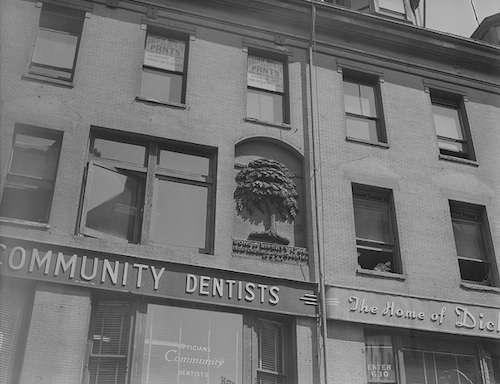
All that’s left of Boston’s Liberty Tree. Photo courtesy Boston Public Library, Leslie Jones Collection.
This story was updated in 2024.
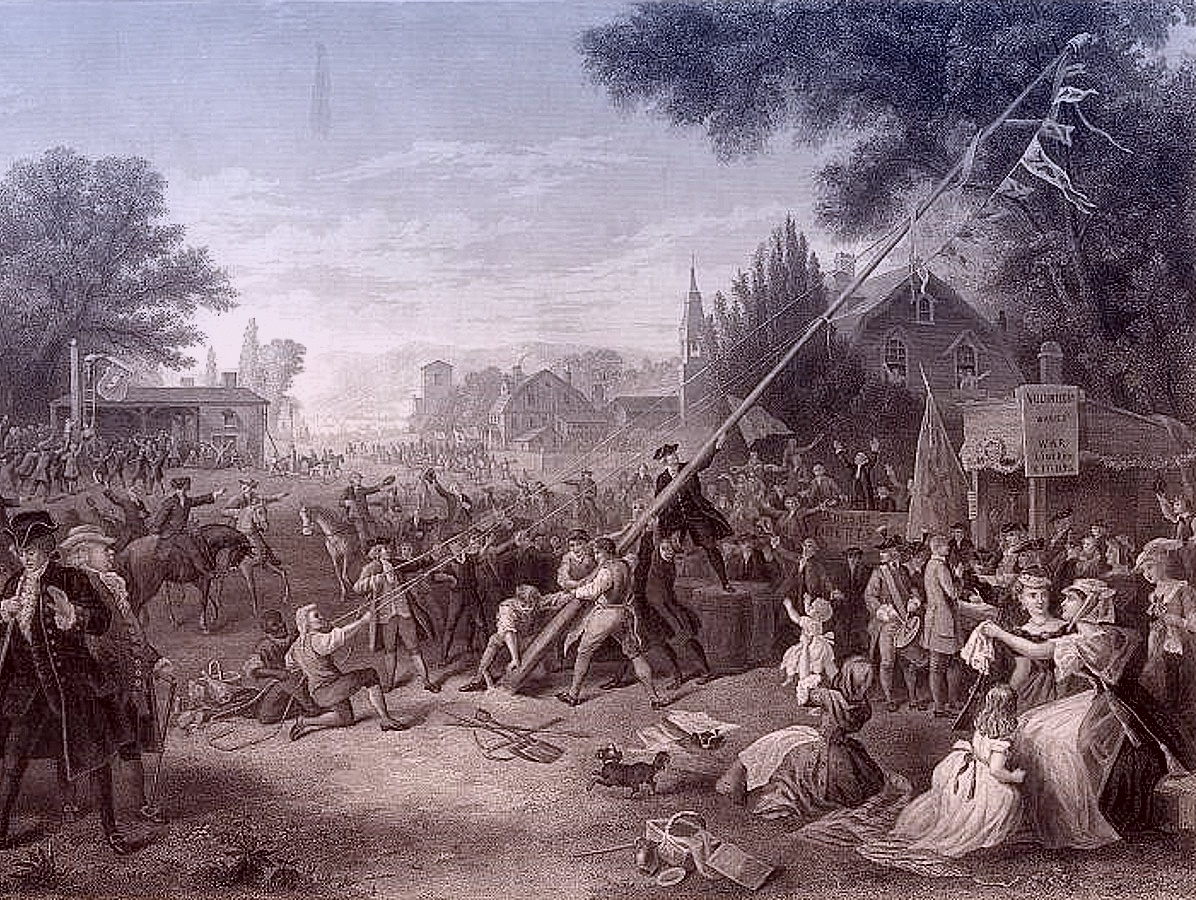
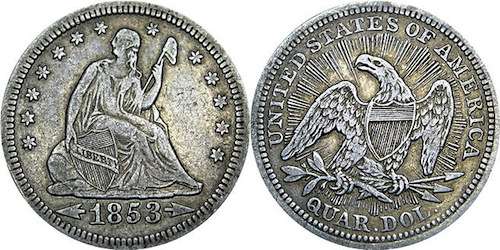

6 comments
Boston’s Liberty Tree today – a more recent photo…
You folks have the best posts to start my day with!
I have not heard of a second liberty tree after 1775? The Liberty Tree that the Sons of Liberty met at and hung the effigies was cut down by British Loyalist Job Williams in 1775. Other than that mistake this article was interesting.
[…] Friday, Oct. 21, 1774, patriotic Tauntonians erected a 112-foot liberty pole on the town green and attached to it one of the most famous revolutionary flags: The Taunton flag. […]
[…] Friday, Oct. 21, 1774, patriotic Tauntonians erected a 112-foot liberty pole on the town green and attached to it one of the most famous revolutionary flags: The Taunton flag. […]
[…] have just received the following intelligence from Taunton… A liberty pole 112 feet long was raised. Attached to it was a Union flag with the words Liberty and Union sewed […]
Comments are closed.